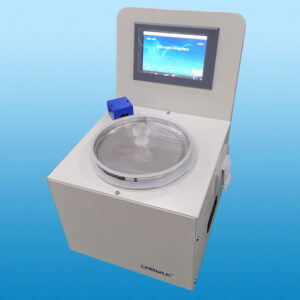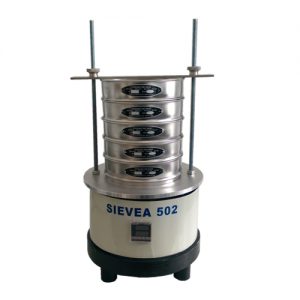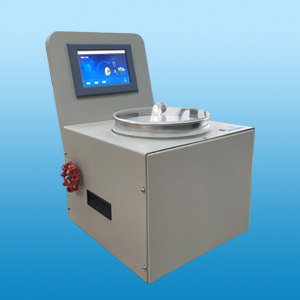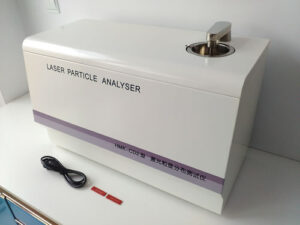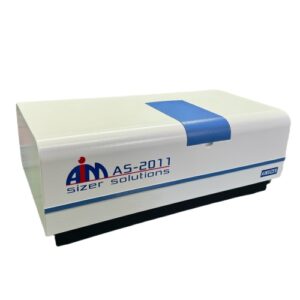Air Jet Sieve in Pharmacopoeia 2015 Part 0982 Particle size and Determination Method of Particle Size Distribution
Air Jet Sieve in Pharmacopoeia 2015 0982 Particle size and determination method of particle size distribution
This method is used for the determination of particle size or particle size distribution of bulk drugs and pharmaceutical preparations. The first and second methods are used to determine the particle size or limit of pharmaceutical preparations. The third method is used to determine the particle size distribution of bulk drugs or pharmaceutical preparations.
First method(microscopic method)
The particle size in this method is denoted by the length observed under the microscope.
Calibration of eyepiece micrometer Calibrates eyepiece micrometers according to microscopic identification method (general principles 2001)
Determination method Take the sample and shake it well. The sample with higher viscosity can add glycerin solution (1→2) and be diluted according to provisions under various items. According to the dosage form or provisions under various items, measure and take the sample and put it on the bearing glass, covered with cover glass. Press lightly to distribute the particles evenly and be careful not to let bubbles in. Semisolid may be applied directly to the bearing glass. Immediately examine the full field view of the cover glass under 50-100 fold microscope. There should be no condensation, Particles of 50μm and above of the dosage form or provisions under various items shall not be detected. Then examine the total number of particles and the number of particles of specified size in the field of view under the dosage form or provisions under various items under 200-500 fold microscope, and calculate its proportion (%).
Second method(sieving method)
Sieving method is generally divided into manual sieving method, mechanical sieving method and air jet sieving method. The manual and mechanical sieving methods are suitable for the determination of most samples with particle size larger than 75μm. For those samples with particle size smaller than 75μm, air jet sieving method or other suitable methods should be adopted.
Mechanical sieving method adopts mechanical method or electromagnetic method to produce vertical vibration, horizontal circular motion, flapping, flapping combined with horizontal circular motion and other vibration modes. The air jet sieving method uses flowing air to move the particles.
During the sieving, attention should be paid to the environment humidity to prevent water absorption or water loss. For the sample easy to produce static electricity, we can add 0.5% colloidal silica and (or) aluminum oxide and other antistatic agents, in order to reduce the impact of electrostatic effect.
- Manual sieving method
- Single sieving method Measure and take the samples specified under various items, place it in the prescribed size sieve (under the sieve equipped with a close receiving container), and then cover it. Rotate and shake in horizontal direction for at least 3 minutes, and tap the sieve in vertical direction from time to time. Take the particles and powders under the sieve, weigh it and calculate its proportion(%).
- Double sieving method Take 5 bags (bottle) of single-dose package or 1 bag (bottle) of multi-dose package and weigh it. Place it on the upper sieve (with large aperture)( under the lower sieve equipped with a close receiving container). Keep sieving in horizontal state, go back and forth between left and right, and tap while sieving for 3 minutes. Take the particles and powders that cannot pass through the large aperture sieve and can pass through the small aperture sieve, weigh them and calculate their proportion(%).
- Mechanical sieving method
Unless otherwise specified, take the specified sieve with diameter of 200mm and receiving container, weigh them. Weigh 25-100g sample according to its bulk density, and place it on the top sieve (with large aperture)( under the lower sieve equipped with a close receiving container), cover the sieve. Set the vibration mode and frequency, and vibrate for 5 minutes. Take each sieve and receiving container and weigh them, calculate the proportion(%) of particles and powder on the sieve and in the receiving container according to the weight difference before and after sieving. Repeat this procedure until two continuous sieving. The difference in the weight of the residual particles and powder on each sieve should not exceed 5% of the weight of the former residual particles and powder, or the difference between the two weights should not be greater than 0.1g. If the weight of particles and powder left on a sieve is less than 5% of the sample size, the weight difference between the two continuous sieves should not exceed 20%.
- Air jest sieving method
Only use one sieve every time. If need to determine the particle size distribution, it should be carried out sequentially from the sieve with the smallest aperture. Unless otherwise specified, take the specified sieve with diameter of 200mm, weigh it. Weigh 25-100g sample according to its bulk density, put it in the sieve and cover it. Set the pressure and jet for 5 minutes. Take the sieve and weigh the total weight. calculate the proportion(%) of particles and powder on the sieve according to the weight difference before and after sieving. Repeat this procedure until two continuous sieving. The difference in the weight of the residual particles and powder on sieve should not exceed 5% of the weight of the former residual particles and powder, or the difference between the two weights should not be greater than 0.1g. If the weight of particles and powder left on sieve is less than 5% of the sample size, the weight difference between the two continuous sieves should not exceed 20%.
- How many grades of Air Jet Test Sieves?
The air jet test sieves are divided into three grades: compliance, inspection and calibration.
Third method(light scattering method)
The scattering phenomenon occurs when the monochromatic beam irradiates the sample. The energy distribution of scattered light depends on particle size. By measuring the energy distribution (scattering angle) of scattered light, the particle size distribution can be calculated according to Mie Scattering Theory and Kirchhoff Approximation. The measuring range of this method can reach 0.02~3500μm. The instrument used is laser scattering particle size distributor.
- General requirements on instruments
scatterometer The intensity of the laser emitted by the light source should be stable and the interference of electronic background and optical background can be automatically deducted.
Adopt characteristic value of particle size distribution[d(0.1)、d(0.5)、d(0.9)]known “standard particles”to evaluate the instrument. The relative standard deviation (RSD) is usually used to characterize the size distribution range of the “standard particle”. When RSD is smaller than 50% (the ratio of maximum particle size to minimum particle size is about 10:1), parallel determination is performed 5 times, The deviation between the mean value of d (0.5) of“standard particles”and its characteristic value should be less than 3%, RSD measured in parallel shall not exceed 3%. The deviation between the mean value of d(0.1) and d(0.9) of “standard particle”and its characteristic value should be less than 5%, all RSD measured in parallel shall not exceed 5%. For the “standard particles”which diameter is less than 10μm, the deviation between the measured d(0.5) mean and its characteristic value shall be less than 6%, RSD measured in parallel shall not exceed 6%. The deviation between the mean value of d(0.1) and d(0.9) and their characteristic values should be less than 10%, and the RSD measured in parallel should not exceed 10%.
- Measuring method
Select wet or dry method according to the properties and solubility. Wet method is used for the determination of suspended samples or samples insoluble in disperse media, Dry method is used for the determination of solid samples with water soluble property and without suitable dispersion media.
Wet method The lower limit of wet method is usually 20nm.
According to the characteristics of the sample, a suitable dispersion method is selected to disperse the sample into a stable suspension. Physical dispersion methods such as ultrasonic and stirring are usually used. By adjusting the ultrasonic power and stirring speed, an appropriate amount of chemical dispersant or surfactant can be added when necessary to make the dispersion system into a stable state, so as to ensure that samples can pass through the testing window evenly and stably and obtain accurate measurement results.
It is only when the double layer potential (ζ potential)of the dispersion system is within a certain range, the system is in a stable state. Therefore, when preparing the dispersion system of the sample, it is necessary to note the measuring system ζ potential to ensure the reproducibility of the dispersion system.
The sample size required for wet method should normally reach 8%~20% of detector shading range. The minimum shading requirement of the most advanced laser particle size meter can be as low as 0.2%.
Dry method The lower limit of dry method is usually 200nm.
Closed measurement is usually used to reduce the moisture absorption of sample. The dry method sampler and sample pool should overcome the bias effect. According to the difficulty of sample dispersion, the air pressure of disperser is adjusted to make particles of different sizes pass through the detection window uniformly and stably at the same speed, so as to obtain accurate measurement results.
For chemical bulk drugs, jet dispersers should be used. Add appropriate amount of metal pellets in the sample tray first, and then add the sample, Adjust the vibration sample injection speed, the dispersion pressure (usually 0-0.4MPa) and the sample outlet slit width to control the dispersion degree of sample and the amount of sample passing through the detector.
The required amount of sample that dry method needs should normally reach 0.5%~5% of detector shading range.
【Tips】(1)The setting of optical parameters of the instrument is related to the particle size distribution of the sample. Particles larger than 10μm have less influence on the system refractive index and absorbance. Particles smaller than 10μm have more influence on the system refractive index and absorbance. In the analysis of particle size of different raw materials and preparations, there is no mature theory for guiding the setting of optical parameters of the instrument, it should be determined by experimental comparison and calibrated with standard particles.
(2)When measuring the particle size distribution of colored substances, emulsions and substances with particle sizes less than 10μm, in order to reduce the measurement error, Mie Theory should be used to calculate the results. Avoid to use the formulas based on the Kirchhoff Approximation.
(3)When determining the samples with wide particle size distribution range, it is not suitable to use the method of segmental measurement, but a single range detector covering the whole measurement range should be used to reduce the measurement error.

